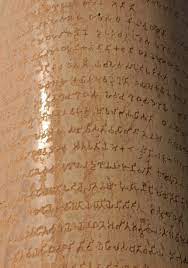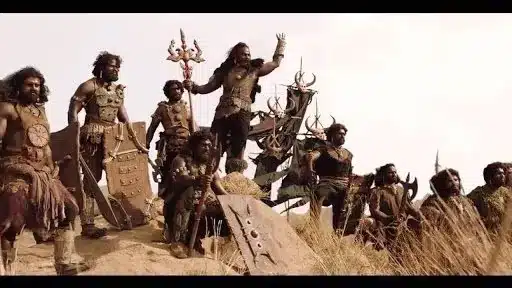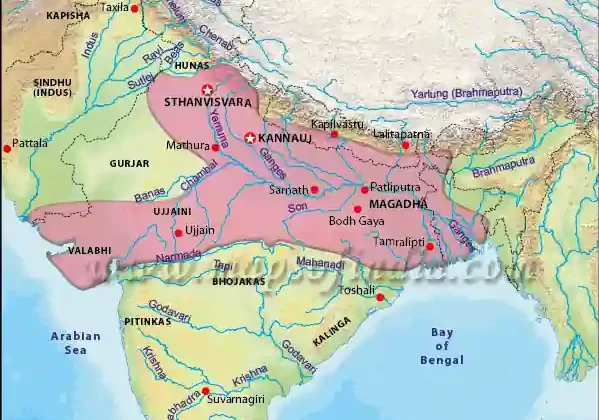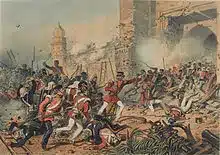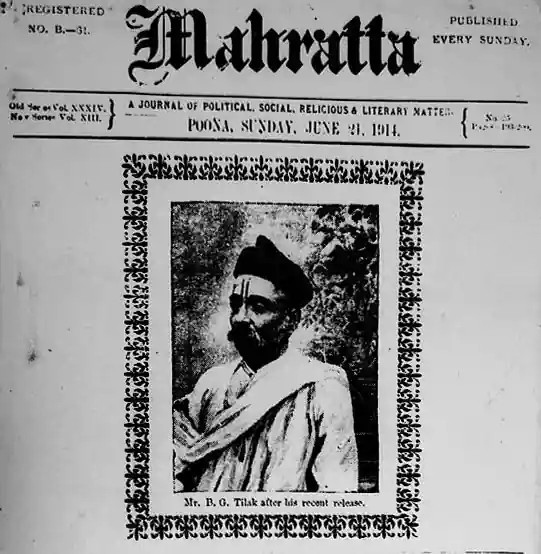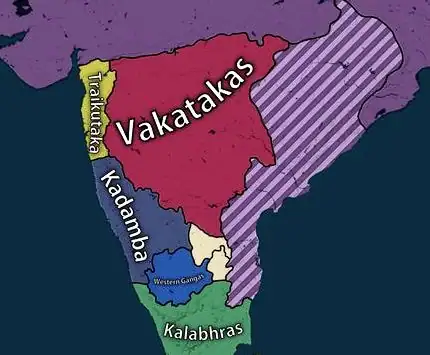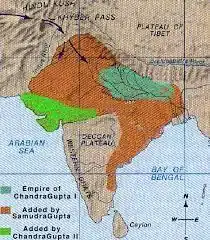Reasons Behind The Downfall Of the Mauryan Empire
Mauryan Empire began to decline after the death of Ashoka in 232 BC. The last king Brihadratha was assassinated by his general Pushyamitra Shunga who was a Brahmin. There are many reasons given by historians for the disintegration of the Mauryan empire like the weak successors, the vastness of the empire, independence of the provinces, foreign invasion, and internal revolt.
The factors which led to the decline of the Mauryan Empire are as follows:
Brahmanical Reaction
- The anti-sacrifice attitude of Buddhism and Ashoka brought much loss to the Brahmanas, who lived on the gifts made to them in various kinds of sacrifices.
- In spite of the tolerant policy of Ashoka, the Brahmanas developed some kind of antipathy towards him. They wanted a policy that would favour them and uphold existing interests and privileges.
- Some of the kingdoms which arose on the ruins of the Maurya empire were ruled by Brahmanas. The Sungas and the Kanvas, who ruled in Madhya Pradesh and further east on the remnants of the Mauryan empire were Brahmanas.
- Similarly, the Satavahanas who founded a lasting kingdom in the western Deccan and Andhra claimed to be Brahmanas.
- These Brahmana dynasties performed the Vedic sacrifices, which were abandoned by Ashoka.
Financial Crisis
- The enormous expenditure on the maintenance of the huge army and payment to bureaucrats, the largest regiment of officers, created a financial crisis for the Mauryan empire.
- Despite the taxes imposed on the people, it became difficult for the Mauryas to sustain this huge superstructure.
- It appears that the large grants to the Buddhist monks by Ashoka made the royal treasury empty and in order to meet the expenses they had to melt the images made of gold.
- The cost of establishing settlements on the newly cleared land also must have strained the treasury, as the people settling on these lands initially were exempted from tax.
Huge Expenditure on army and bureaucracy
- During Mauryan age a huge expenditure was done on maintaining army and bureaucracy. Moreover, Ashoka during his reign made large grants to the Buddhist monks which made the royal treasury empty. The Mauryan kings who succeeded Ashoka faced the financial crunch.
Oppressive rule in provinces
- The oppressive rule in the provinces was another factor that led to the breaking-up of the empire.
- In the reign of Bindusara, the citizens of Taxila complained against the misrule of wicked bureaucrats (Dushtamatyas).
- Their grievances were redressed by the appointment of Ashoka as the viceroy of Taxila. But, when Ashoka became the emperor, a similar complaint was lodged by the same city.
- The Kalinga edicts show that Ashoka felt very much concerned about the oppression in the province and therefore, asked the Mahamatras not to torture townsmen without due cause.
- For this purpose, he introduced rotation of officers in Torali (in Kalinga), Ujjain and Taxila.
- All the measures taken did not help to stop oppression in the outlying provinces and after the retirement of Ashoka, Taxila took the earliest opportunity to throw off the imperial yoke.
The partition of the Empire
- After the death of Ashoka, the Mauryan Empire split into two halves – western and eastern parts. This weakened the empire.
- Kalhana, the author of the work Rajatarangini which is an account of Kashmir’s history, says that after Ashoka’s death, his son Jalauka ruled over Kashmir as an independent ruler.
- This partition resulted in invasions from the northwest.
Highly centralised administration
- Historian Romila Thapar is of the view that the highly centralised administration under the Mauryas became a problem with the later Mauryan kings who were not as efficient administrators as their predecessors.
- Powerful kings like Chandragupta Maurya and Ashoka could control the administration well. But weak rulers led to a weakening of the administration and ultimately led to the empire’s disintegration.
- Also, the sheer vastness of the Mauryan Empire meant that there had to be a very effective ruler at the centre who could keep coherent all the regions.
- A weakening of the central administration coupled with a large distance to communicate also led to the rise of independent kingdoms.
Weak monarchs after Ashoka
- The successors of Ashoka were weak kings who could not carry the burden of the huge empire that was bequeathed to them.
- After Ashoka, only six kings could rule over the kingdom for a mere 52 years.
- The last Maurya king, Brihadratha was overthrown by his own army commander, Pushyamitra.
- Only the first three kings of the Mauryan Empire were men of exceptional abilities and character. The later kings were no match in quality to their illustrious ancestors.
Vastness of the empire
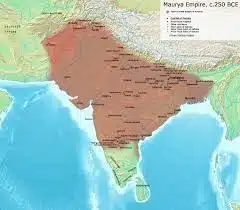
- The Maurya Empire was too vast in its extent. While extending to the farthest corners of the Indian sub-continent it also included territories outside the natural frontiers of India. This vastness was itself a source of weakness rather than of strength because of the lack of communication. Distances were so great that the empire could not remain a closely integrated political unit for a longer time.
- No doubt, there was an elaborate system of administration as left by Chandragupta and Asoka. But the whole machinery worked under the direction of the centre. The highly centralized character of the government suffered from a grave defect. It depended on the king for all major policies. As the king was the pivot of the whole machinery, the success of the administration depended on his personality.
- If the king was strong, the centre was strong. If he was weak, the centre became weak. Once the centre became weak, the administration of the distant provinces also became weak. In the days of the later Mauryas this is what exactly happened. The weak centre under a weak king could not govern the vast empire. As a result, the Maurya administration collapsed and the empire began to disintegrate.
Independence of the provinces
- After Ashoka, under the later kings, the centre’s hold over the vast empire began to disintegrate. This led to the emergence of various kingdoms.
- Kalhana, the author of the famous Kashmir Chronicle Rajatarangini writes that Asoka’s son, Jalauka, ruled over Kashmir as an independent king after his father’s death. More than that, he conquered some other places like Kannauj for his kingdom. This shows how the distant provinces of the empire rose as independent kingdoms.
- There is no doubt that soon after Asoka’s death his conquered country of Kalinga became independent.
- From the Tibetan sources it is known that Virasena ruled independently in Gandhara.
- From later literary sources it is gathered that Vidarbha became independent of Magadha.
- From the Greek sources it is known that in the north-western frontiers of the Maurya Empire a king named Subhagasena (Sophagasanus) began to rule independently. He was described by Polybius, the Greek writer, as the ‘King of the Indians.’ This king faced an invasion of King Antiochus III of Syria, but was powerful enough to force the invader of ‘friendship with him’. This happened about 206 B.C., not long after Asoka’s death. Subhagasena ruled over the northern provinces of the former empire.
- These evidences prove that the Maurya Empire disintegrated when its provinces became independent under powerful or semi-powerful rulers.
Spread of the new material knowledge in the outlying areas
- Once the new knowledge of iron tools and weapons spread in the peripheral areas, Magadha lost its special advantage.
- On the basis of material culture acquired from Magadha, new kingdoms such as the Shungas and Kanvas in central India, the Chetis in Kalinga and the Satavahans in the Deccan were founded and developed.
Internal revolt
- During the rule of Brihadratha, there was an internal revolt led by his army chief Pushyamitra Shunga in about 185 or 186 BCE.
- Bana describes in Harshacharita how Shunga killed Brihadratha during an army parade.
- This ended the rule of the Mauryas over Magadha and thence started the Shunga dynasty’s rule.
Foreign invasions
- From the days of Alexander’s invasion, the north-west frontier of India remained exposed to the Greeks.
- Chandragupta Maurya drove out the Greeks from the Indian soil, and by defeating Seleukos Nikator established his authority outside the Indian frontiers.
- During the rule of Bindusara and Asoka, there was no fear from the Greek powers as they were fearful of the Maurya army.
- But, after Asoka’s death when the Maurya Empire declined and disintegrated, the Greeks once again cast their greedy eyes on India.
- The Greek writer Polybius refers to the unsuccessful attempts of King Antiochus the Great to conquer the Indian lands. He had crossed the Hindu Kush and had descended on Indian territories. After, that, references are available to further Greek invasions.
- From a later work, Gargi Samhita, it is known that the Greeks entered deep into Indian territories as far as Mathura and Oudh.
- These might have been plundering raids, but the entry of the foreigners towards the interior areas of the Maurya Empire proved that the empire was no longer capable of defending itself.
- In time, foreign tribes attacked and established their kingdoms on Indian soil. The notable ones were the Indo-Greeks, the Sakas and the Kushanas.
Ashoka’s policies
- Some scholars suggest that Ashoka’s policies of non-violence and pacifism led to the weakening of the empire.
- Since he stopped waging wars, foreign powers were once again tempted to attack the kingdom.
- Also, he gave a lot of importance and effort to the propagation of Buddhism.
Absence of the boundary structure
Ashoka was so busy in carrying our religious activities that he seldom paid attention to north-west frontier of Mauryan Empire. The Greeks took advantage of this and set up a kingdom in north Afghanistan which was known as Bactria. This was followed by a series of foreign invasion which weakened the empire.
- The Chinese ruler Shih Huang Ti (247-210 BCE) constructed the Great Wall of China in about 220 BCE, to protect his empire against the attacks of the Scythians, a central Asian nomadic tribe who were in a state of constant flux.
- No such measures were taken by the emperor Ashoka on the northwestern frontier of India.
- In order to escape the Scythians, the Parthians, the Shakas and the Greeks were forced to move towards India.
- The Greeks were the first to invade India in 206 BCE and they set up their kingdom in north Afghanistan called Bactria.
- This was followed by a series of invasions till the beginning of the Christian era.
Significance of Mauryan Age
A new era was opened in Indian History after the establishment of Mauryan Empire. It was very first time in history that whole India was politically united. In addition, from this period history writing became clear because of accuracy in chronology and sources. Along with this indigenous and foreign literary sources were available in ample form. This empire left records in a large number to write the history of this period.
Also, some important archaeological findings associated with Mauryan Empire were stone sculptures; a tremendous example of typical Mauryan art. Some scholars suggest that message on Ashoka inscription was entirely different from most other rulers which is a symbol of powerful and industrious Ashoka and also he was humble more than other (later) rulers who adopted grand titles. So it’s not surprising that leaders of the nation regarded him as an inspiring figure.
Also read this :
- Pre-Mauryan Dynasty
- Mauryan-Empire
- The Satavahanas
- Download the pdf of Important MCQs From the History Of Ancient India
- List Of Important Inscriptions In India

